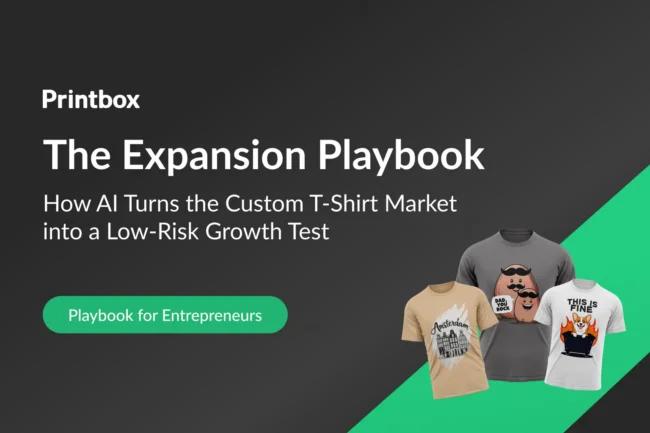We live in a digital age where people expect to be able to buy whatever they, whenever they want, through online stores. People expect this on any device with no complications: this includes photo products. If you’re looking to increase your revenue, it’s time to go online. Doing so will help automate the process and, in the long run, cut down on costs.
These days, having a strong online presence is becoming the norm, not the exception. If you’re selling customized photo products, the internet is the perfect platform for your goods. Done right, you’ll widen your audience and create an easy and convenient way for your customers to design and purchase custom items.
Just how lucrative can this be? According to Infotrends:
Personalized photo products represent a lucrative revenue opportunity, with double-digit growth expected over the next few years. It also remains a relatively untapped market.
So, do you want to get started transferring your printing business online? Here are 4 simple steps to get established on the web.
Step 1: Use Social Media
Social media is a great way to interact with people and – perhaps more importantly – show people that you exist.
With the likes of Facebook, you can create a page for your business, complete with elegant photos of finished products. Invite your friends to like this page and, as you connect with happy customers and ask them to support you via social media, your page will grow in its reach.
You can further ask satisfied customers to leave reviews online, as this will entice other people to consider your products.
Furthermore, you can use Facebook ads to promote your business on a local scale. The social network is excellent for targeting people by specific criteria (like age, location or interests) and it also has users from all generations, so it’s the perfect place to find your ideal customer base. It’s also a cheap way to start, with most campaigns starting at between $50 and $100.
Step 2: A Basic Website
It goes without saying that a website is an absolute must for your business. You might even already have a site, but is it aesthetically pleasing, easy to use or as engaging as today’s users require?
The fact is that many companies try and get by on a decade-old website that isn’t enticing for today’s users – and they lose out on business as a result.
A strong visual appeal is a must. Cram your website with photos of all your products and don’t forget to update them as the seasons change, which different products become more popular. This will also give returning customers something new to experience.
Speaking of new experiences, a blog is also a great idea. You can discuss your portfolio, present new products and special offers, or just write about your specialized niche. As long as it engages your audience, it can help promote your range!
The end goal, however, will be to convert your website into an e-commerce store, complete with an online editor. Speaking of which…
Step 3: An E-commerce Store & Professional Product Editor
When you want to take the plunge and turn your website into an ecommerce store, you’ll find it’s actually easier than you think. Furthermore, it can enable users to pick, design and order products from their own home, whenever they want.
In short, it saves time on communication and, when integrated with your printers, adds easy, automated work processes. What’s not to love?
To achieve this, you need to secure a high-quality photo product editor. These are very specialized photo printing software products, so you will typically need specific editors for each item you sell, such as photobooks and calendars. Templates are also a must-include, since they will ensure customers don’t do all the hard work, yet it still needs enough features to allow them to design and customize as much as possible.
It’s a lot of work, clearly, so don’t design this yourself. The market has plenty of tools available, so find an editor that works with your existing printers for an easy, instant solution. As you can find out here, the entire process for starting your own website is surprisingly quick, easy and affordable.
Step 4: Experiment with digital marketing
By this point, you’ve created a website, maybe even a professional e-commerce store, and started using social media to generate your brand’s presence. Now that everything is up and running, it’s time to try digital marketing.
First of all, ensure you are discoverable on Google maps, so people can easily find your store. Google’s guidelines require you to clearly include your address and organize your website in a structure it understands – this is something we’ll cover at length in another post.
The same goes for any local directories – make sure you’re listed anywhere where people might look for you.
If you’re feeling bolder, you can experiment with some paid marketing. Google ads offer a great way to target people directly in your area, as well as people searching for specific products.
For existing customers, you can send special offers and updates via a mailing list. If you don’t already have one, you can use your website to collect subscriptions and offer in-store customers the chance to sign up.
Many of these will offer a great way to improve sales during quieter periods. To learn more about boosting revenue off-season, you can read our guide here.





